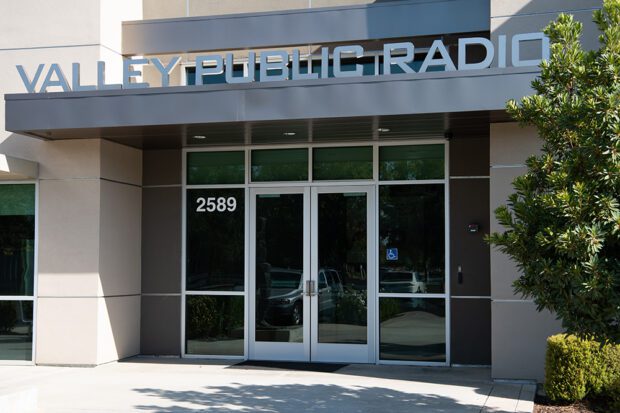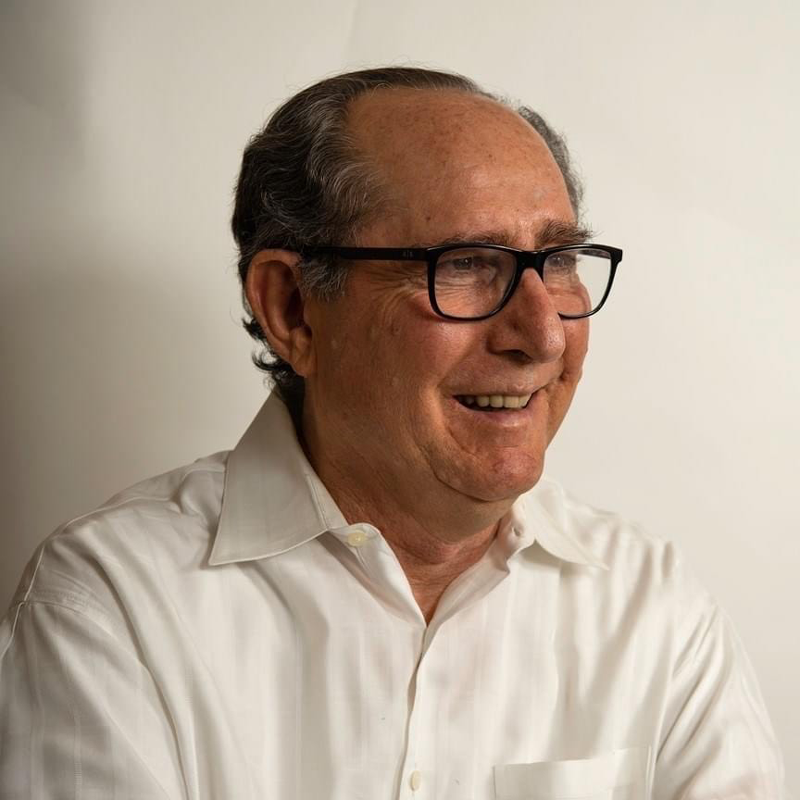
“We’ve taken the President at his word in his calls to eliminate funding for public broadcasting,” says Joe Moore, president and general manager of Valley Public Radio, noting staff at the station realized early that President Trump’s threats against public media were going to get real.
“If you read Project 2025, there’s a big section in there on eliminating federal funding for public media and also questioning whether public media stations should even remain in existence, whether they should continue to hold broadcast licenses. So, we’ve been taking it seriously all along.”
The Corporation for Public Broadcasting (CPB) is an umbrella organization funding National Public Radio (NPR) and the Public Broadcasting Service (PBS). Trump began his recent onslaught by attempting to fire three of the board members of the CPB in April. The board members refused to step down and sued Trump, saying he lacked the authority to do the firing. Trump in turn sued CPB to force the ouster of the board members.
On May 1, Trump signed an executive order to cease funding CPB.
There was uncertainty as to whether that executive order could be deemed legal, as appropriations to CPB came from Congress and likely could only be cut by Congress. NPR and PBS, along with some member stations, sued the administration to block the executive order.
But then Congress voted to claw back the funding allocated to CPB. It was done with the Republican-backed Recissions Act of 2025, which Trump signed into law on July 24. The act was legal; it was Congress taking away funds it had previously allocated, so there was no longer any legal recourse.
It sounded the death knell for CPB, which soon announced it was shutting down, except for a skeleton crew that would wind down operations by the end of December.
“We were working up until the very end,” Moore said, “to try to gain support. There’s historically been, and I want to emphasize this, broad bipartisan support for public broadcasting, for local public broadcasting stations.
“Presidents in both parties have, ultimately, signed budgets that support CPB funding. And regardless of who’s been in control in Congress, federal funding has been consistent for public broadcasting stations.”
However, times have changed. The Associated Press reported on Aug. 1: “Trump, who has called CPB a ‘monstrosity,’ has long said that public broadcasting displays an extreme liberal bias, [and he] helped create the momentum in recent months for an anti-public broadcasting groundswell among his supporters in Congress and around the country. It is part of a larger initiative in which he has targeted institutions—particularly cultural ones—that produce content or espouse attitudes that he considers ‘un-American.’”
Congress clawed back $1.1 billion from CPB that had been appropriated for its use during the next two fiscal years. KVPR will lose $175,000 each year, or 7% of its budget. The local PBS station, Valley PBS, will lose $900,000 per year, around 25% of its budget.
In 2023, rural radio networks received 31% of all CPB grants. “There are stations out there in rural areas and in very remote areas,” Moore said, “that have 30%, 40%, 50% of their funding coming from CPB. And those are the ones that are most at risk with the discontinuation of federal funding.”
Stations in urban areas have a more affluent audience and will be more able to get donations.
Moore said KVPR staff are hearing from their colleagues at other stations that fundraising results are varying from place to place. “KUOW in Seattle, they pretty much raised all of what they lost in just the span of a couple of days,” he said.
“Others are going at it much more slowly…we’re kind of in the middle of the pack. We are seeing success, but we aren’t all the way there just yet. We’ve raised a little over $100,000 since the recission passed.”
The station can spend less on the programming that it purchases. They want to save money while preserving “the core of our broadcast service,” Moore said.
There will probably be cuts to operations, specifically local coverage. “That’s probably the hardest one to deal with,” Moore said.
“The problem is we have a pretty small team as it is. Almost everyone at our station wears multiple hats. And we try to do the work of a [much] larger station.”
Another factor in the equation is classical music programming. According to the Associated Press, “NPR President and CEO Katherine Maher estimated recently…that some 96% of all classical music broadcast in the United States is on public radio stations.”
KVPR has a streaming classical music channel, and the digital performance royalties to be paid to artists have so far been negotiated and paid by CPB on behalf of stations.
“The future of those agreements and payments isn’t really known at this time,” says Moore. “The agreements have several years left on them, but if CPB dissolves, we’re not sure what that means for stations at this point.
“Even if the agreements remain in place after Dec. 31, 2025, we don’t know what sort of bill stations might get hit with, as the details of these payments between CPB and the copyright holding organizations are covered by NDAs [nondisclosure agreements] which we are not a party to.”
Ten years ago, KVPR took out a loan to build its current office and studios in Clovis, and a balloon payment of $700,000 is due in just about a year. KVPR has raised $200,000 so far toward that payment and will try to raise the rest soon. It hopes to pay the loan off early to save on the cost of the loan.
The station hopes to raise as much as possible in the short term, while PBS and NPR are in the news and the public is motivated. So far indications have been positive: “And that has been the silver lining in what has been a very dark chapter for public broadcasting,” Moore said.
“We’re going to make it through this, in some way. There may be some stations in other communities that don’t. But we’re going to come through on the other side, and we’re not going to waver at all in our ability and our determination to serve the Valley.”
Trump’s executive order attempting to shut down CPB said the following: “Unlike in 1967, when the CPB was established, today the media landscape is filled with abundant, diverse and innovative news options. Government funding of news media in this environment is not only outdated and unnecessary but corrosive to the appearance of journalistic independence.”
Tune in for a day to KVPR or Valley PBS, and you will see if the above rhetoric has any relevance to the reality of the media landscape or to the actions that have been taken against public media by Trump and the Republican Party.
The text is sophisticated enough that it was not likely written by Trump. But it is the language the Republicans use to make themselves feel OK about the most repressive American government move on the media in recent memory.

